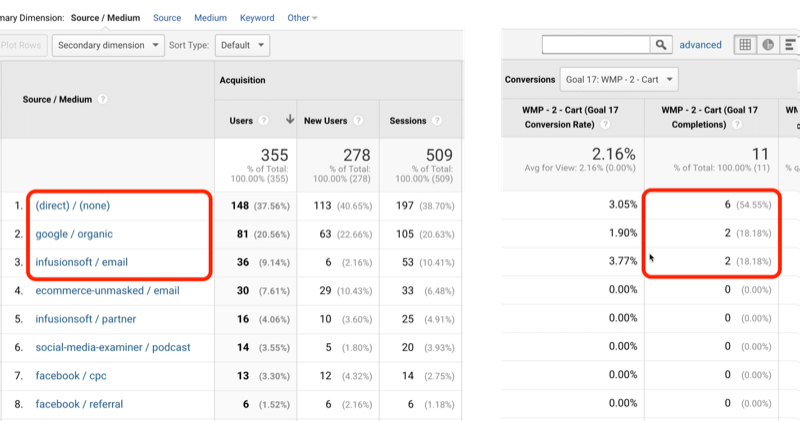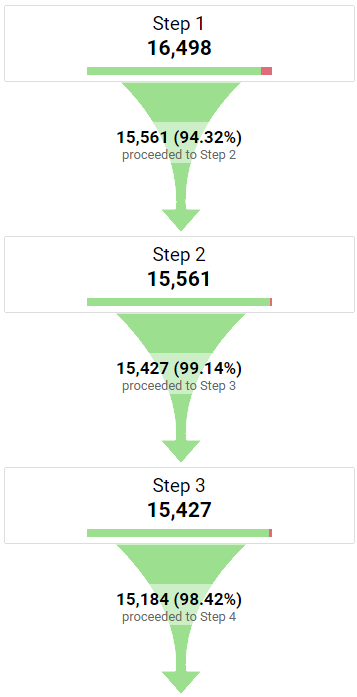Key Insights on What Data Is Google Analytics Goals Unable to Track
Key Insights on What Data Is Google Analytics Goals Unable to Track
Blog Article
Debunking Google Analytics Limitations: Reveal What Information Goals Can not Track
In the realm of electronic analytics, Google Analytics stands as an effective device that supplies valuable insights into website efficiency and customer behavior. From the complexities of user communication with vibrant web content to the intricacies of cross-device user trips, these restrictions lost light on locations that might remain covered from traditional analytics viewpoints.

User Interaction With Dynamic Material
User interaction with vibrant material plays an important duty in recognizing customer habits on websites and enhancing the overall customer experience. Dynamic web content describes elements on a web page that can alter without the requirement for a full page reload. This consists of interactive components such as pop-ups, sliders, forms, and videos that react to customer actions in real-time. By tracking user interactions with dynamic material, website owners can acquire useful understandings right into customer involvement, choices, and behaviors.
Google Analytics provides various devices to track individual communications with dynamic content, such as occasion tracking and online pageviews. Occasion tracking enables you to check specific user activities, like clicking a switch or enjoying a video, supplying information on exactly how individuals communicate with vibrant elements. Virtual pageviews can be utilized to track communications that do not lead to a brand-new web page load, supplying a thorough view of individual interaction with dynamic web content. By analyzing this data, web site proprietors can make enlightened decisions to boost customer experience and drive conversions.
Cross-Device Individual Journeys
How can contemporary analytics devices track the complicated paths users take across numerous devices in their online journeys? Cross-device customer journeys offer a significant challenge for tracking and examining user actions accurately. As individuals connect with internet sites or apps using different tools such as desktop computers, tablets, and mobile phones, it becomes essential to understand how they relocate in between these systems to optimize user experience properly.
Google Analytics faces limitations in tracking cross-device customer trips due to privacy concerns and technological constraints - what data is google analytics goals unable to track. While it can offer understandings into individual gadgets' interactions, tracking a smooth customer trip across several gadgets remains a challenge. This constraint can lead to incomplete information and fragmented user insights, making it tough for organizations to create a unified view of the consumer trip
To resolve this issue, services can make use of advanced analytics tools that offer cross-device monitoring capabilities, permitting them to gain a more holistic understanding of individual habits. By leveraging these devices, businesses can link the space in tracking cross-device individual trips and optimize their electronic strategies for a seamless customer experience.
Offline Conversions and Attribution
As organizations navigate the challenges of tracking cross-device customer journeys, another crucial aspect to think about is the realm of offline conversions and attribution in the world of data analytics. While Google Analytics supplies beneficial insights into on the internet individual actions, it drops short when it comes to tracking conversions that take place offline. This constraint presents a significant challenge for organizations that have both online and offline sales channels.
Offline conversions, such as purchases made in physical shops or via call centers, are necessary to comprehending the total customer journey. Without the capability to attribute these offline conversions to particular online interactions, organizations may have a hard time to properly gauge the impact of their digital advertising efforts.
To address this gap, companies can explore alternate solutions such as incorporating CRM systems with online analytics tools or using unique promotion codes that can be traced back to online projects. By connecting the void between online and offline information, businesses can obtain a much more comprehensive understanding of their customers' habits and enhance their overall marketing techniques.
Person User Recognition
In the realm of information analytics, the capability to properly identify private users across numerous online touchpoints is a critical challenge for businesses looking for to personalize and enhance their marketing strategies. While Google Analytics offers beneficial understandings into individual habits and interactions, it drops short in enabling the identification of specific individuals due to privacy concerns and technical limitations. Google Analytics makes use of one-of-a-kind identifiers such as click over here cookies to track individual sessions and habits, yet these do not equate to identifying individual customers in a personal feeling.

Data From Secure Pages
Regardless of the enhancing occurrence of safe and secure pages on web sites, getting data from these encrypted resources provides an one-of-a-kind obstacle for digital analytics systems like Google Analytics. Protect web pages, indicated by HTTPS in the link, secure information traded in between the customer's internet browser and the internet site's web server to guarantee privacy and protection. While this file encryption is vital for shielding sensitive info, it additionally postures restrictions for tracking user actions and event analytics data.
Google Analytics encounters challenges in gathering comprehensive info from safe pages as a result of the encryption methods in position. Therefore, certain data points such as referral sources, keyword searches, and also some user communications may not be completely captured when users access a site with a secure link. This constraint can influence the accuracy and completeness of the data analysis, causing spaces in understanding user habits and preferences on protected pages.
To browse this obstacle, digital experts might require to discover different monitoring techniques or utilize various other devices specifically developed to collect insights from safe pages. By adapting techniques to suit these limitations, services can still derive beneficial analytics in spite of the constraints provided by encrypted connections.
Final Thought
In final thought, Google Analytics has limitations in tracking customer interaction with dynamic web content, cross-device individual journeys, offline conversions, individual customer identification, and information from safe pages. In spite of its valuable understandings, Google Analytics might not provide a full picture of individual interaction throughout numerous touchpoints.
Individual communication with dynamic content plays a crucial function in comprehending individual habits on sites and maximizing the overall user experience. By tracking individual interactions with dynamic web content, internet site proprietors can gain valuable insights into customer engagement, preferences, and behaviors.
Google Analytics uses distinct identifiers such as cookies to track customer sessions and her comment is here behavior, but these do not equate to identifying private users in a personal sense.
As an outcome, certain data factors such as reference resources, keyword searches, and also some user communications might not be totally captured when users access an internet site through a safe and secure connection.In verdict, Google Analytics has restrictions in tracking user communication with vibrant web content, cross-device user trips, offline conversions, private user recognition, and information from protected web pages.
Report this page